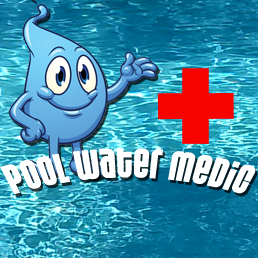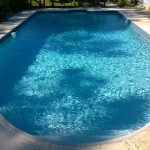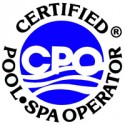Sep
17
How Often Should I Run And Clean My Filter?
ByWater clarity depends mainly on three factors:
- 1. Proper chemical balance 2. Adequate daily circulation 3. Quality filtration
- Your swimming pool water needs the combination of these three variables to stay crystal clear, algae free and ready for swimming enjoyment.
- The filter is designed to trap small particles suspended in the pool water. These small particles are what make inadequately filtered pool water look hazy or milky.
- A dirty filter can have a dramatic effect on circulation. As water passes through the filter, millions of tiny particles cling to the filtration elements. Eventually, these accumulated particles make it difficult for water to pass through the filter. A dirty filter can reduce pump efficiency by up to 80 percent. In other words, circulating your water for 10 hours a day when the filter is dirty is the equivalent of circulating the water for 2 hours a day when the filter is clean. Many times, a homeowner will find their water is cloudy and greenish, even though the chemical levels are fine, and the pump is running for an adequate amount of time each day. A dirty or damaged filter is usually the source of the problem.
- Since filtration and circulation play such an important role in keeping your swimming pool water clear and properly maintained, we have included the following standard instruction for the three types of filter systems. Following these instructions will assist you in keeping your filter system working efficiently and effectively.
1. SAND FILTERS (Usually a round fiberglass or stainless steel tank)
- Run filter system for approximately 1 hour for every 10 degrees of outside temperature:
- Summer 8 to 15 hours per day Winter 4 or more hours per day (If pool looks cloudy, run filter until pool clears- then go back to your regular schedule)
BACKWASHING SAND FILTERS
- Most filter manufacturers recommend backwashing after a clean filter has built up 5-10 PSI of pressure, as indicated on the pressure gauge. Sand filters usually take 1 to 4 weeks. Over backwashing can lead to algae problems in the heat of the summer due to the loss of important chemicals. Avoid backwashing within 12 hours after your pool has been chemically serviced.
- **Never move the backwash valve when the pump is running (this will break the parts inside the filter)
- Turn off the pump
- Turn the multi port or valve handle to the backwash position
- If necessary, roll out your backwash hose or open valve on backwash line
- Turn on the pump and run system for 1-3 minutes or until water in the sight glass or discharge hose turns clear
- Turn off the pump
- Place the valve handle in the filter position.
- If necessary, redo the first steps, two to three times, this will shake up the sand and remove more dirt at each backwash cycle
- Turn on the pump and open the air relief valve on the top of the filter to bleed all air from the system
- Sand in filter should be replaced or checked every 4 to 5 years. In painted pools, sand may need to be replaced annually. Please have the filter parts (i.e. laterals) checked for cracks or breaks any time the sand is removed, these parts are under the sand and can only be checked when the sand is removed.
- The efficiency of the sand filter, as measured by the largest-sized particle that can pass through it without being caught, is 40-50 microns. (A micron is a millionth of a meter.)
2. DIATOMACEOUS EARTH FILTERS
- Run filter system 1 hour for every 10 degrees of outside temperature:
- Summer 8 to 10 hours per day Winter 4 to 8 hours per day (If pool looks cloudy, run filter until pool clears- then go back to your regular schedule)
BACKWASHING D.E. FILTERS
- Most filter manufacturers recommend backwashing after a clean filter has built up 5-10 PSI of pressure as indicated on the pressure gauge. D.E. filters typically build up these pressure levels in approximately 1 to 3 months. Over backwashing can lead to algae problems in the heat of the summer due to the loss of important chemicals. Avoid backwashing within 12 hours after your pool has been chemically serviced.
- **Never move the backwash valve when the pump is running (this will break the parts inside the filter)
- Shut off the pump
- Turn the multi port or valve handle to the backwash position
- If necessary, roll out your backwash hose or open valve on backwash line
- Turn on the pump and run system for 1-3 minutes or until water in the sight glass or discharge hose turns clear
- Turn off the pump
- Place the valve handle in the filter position.
- If necessary, redo the first steps, two to three times, this will loosen up debris and remove more dirt at each backwash cycle Place the multi port valve handle back in the filter position
- Turn on the pump
- Coat the filter grids with D.E. powder by adding the recommended amount through the skimmer closest to the filter
- FRESH D.E. MUST BE ADDED AFTER EACH BACKWASHING!
- Diatomaceous Earth (D.E.) filters use a powder called diatomaceous earth to strain out the small tiny particles that pass through the system. This product is very inexpensive and readily available at home and garden centers. Each time you backwash a D.E. filter, you will flush out both accumulated dirt and debris and spent D.E. from the filter canister. Failure to replace the canister with fresh D.E. can cause severe damage to the internal elements of the filter and will leave the filter virtually non-effective, since the earth is the primary filtering agent.
- There is a simple formula to figure out how much D.E. should be added to your filter. First, determine the size of your filter. The square feet of filtration area inside the filter canister determine filter size. This number is found on a specifications plate on the front of the canister. (Most filters carry a filtration area of 36, 48, 60, or 72 square feet.) Using a one-pound coffee can, add one can of D.E. for every 5 square feet of filtration area. It’s OK to round off to the nearest multiple of 5; the filter won’t mind a little extra D.E. A 48 square foot filter requires 10 cans of D.E. A 36 square foot filter will function effectively on 7 cans of D.E.
- Even with regular backwashing, D.E. filters accumulate debris and it is a good idea to have your filter dismantled and cleaned at least once a year. This affords an opportunity to check internal elements for wear and tear, and to ensure that the filter is working at peak efficiency.
3. CARTRIDGE FILTERS
- Run filter system 1 1/2 hour for every 10 degrees of outside temperature:
- Summer 8 to 15 hours per day Winter 4 to 10 hours per day (If pool looks cloudy, run filter until pool clears- then go back to your regular schedule)
CLEANING CARTRIDGE FILTERS
- Clean filter cartridges every 2-3 weeks, depending on dirt accumulation
- (Best if preformed the day before scheduled chemical service)
- Turn off the pump
- Remove cartridge elements from canister
- Spray cartridge elements until clean
- Replace clean elements into canister
- Turn on the pump and open the air relief on the top of the filter to bleed all air from the system
- Have cartridge elements checked every year for wear and tear.
- There may be as few as one or as many as fifteen or more cartridge elements inside a cartridge filter. The cartridge elements are cylindrical, and made of a paper-like fiber. As the water passes through the elements, small tiny particles are collected on the element material. Cartridges remove smaller debris from the water than sand; its micron rating is about 20 microns. This filter is cleaned about once every 2 to 3 weeks by removing the elements from the canister and hosing it off using a high-pressure nozzle.
- Drawbacks for the cartridge filter include: Most cartridge filters are for smaller pools and spas containing approximately 12,000 gallons of water or less. There is no mechanical method for backwashing these filters – it must be manually disassembled and hosed off. The cartridge elements need to be replaced as they become old and worn: about every 2 years, which can be expensive, depending on the size, style and brand of cartridge. Pools with cartridge filters tend to develop high dissolved solids levels (TDS) faster than sand or D.E. filters, because there is no water removal via backwashing.















